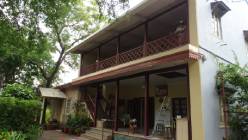Our CDC team is passionate about structural conservation of historical structures and thrive on the challenges of restoring old monuments, and ancient structures. At CDC we have the core expertise in assessment of the Heritage buildings and have contributed significantly to the successful conservation, protection and adaptation of important structures.
Our Managing Director Mr. Ravi Ranade is, at present, a Member of The Heritage Structure Committee of Satara -Wai –Panchgani – Mahabaleshwar , Member of The Heritage Structure Committee of Matheran & Ex-Heritage Structure Committee of Pune Cantonment Board.
We are the ONLY NDT consultant in India, who has the most advance testing instruments for Heritage structures like –
- Flat Jack Test for masonry,
- Micro-Drill Resistance test for timber
- Special compressive test attachment for testing Brick Masonry core samples as per UIC ( UK ) code
- Special Rebound Hammers for Bricks and Mortar testing
We are the leading Heritage structural restoration consultant in India. Till date we have offered our services to more than 30 prestigious heritage structures, as listed below –
- Shaniwar wada , Pune
- Surat Castle, Surat
- IIM, Ahmedabad
- Council Hall, Pune
- Vishrambag Wada, Pune
- Palace of Pant Pratinidhi, Aundh, Satara
- Deccan College, Pune
- Nana wada, Pune
- Pune University – Main Building
- Nageshwar Temple, Pune
- PDCC Bank, Pune
- Gundacha Ganapati Temple, Pune
- St Helena School, Pune
- St. Xaviers Church – Pune
- Jangali Maharaj Temple, Pune
- Kasba Ganapati Temple, Pune
- Chintamani Temple, Theur
- Tulshi Bag Temple, Pune
- Rollstone Bungalow, Pune
- Mohiniraj Mandir – Newasa
- Mujumdar Wada – Pune
- Old Prime Minister’s Office ( old Singha Durbar Palace) – Nepal Govt, Nepal
- Kesar Library ( Old Palace ), Kathmandu, Nepal
- Agriculture College, Pune – Main Building
- Mahatama Phule Vegetable Market, Pune
- Brother Deshpande Church, Pune
- Pune Panch-haud Mission Church, Pune
- Adwait Vedant Ashram, Mayawati , Uttarakhand
- Laxmi Narsimha Temple – Neera Narsingpur
- Siddhivinayaka Temple, Siddhatek, Ahemednagar
- Mayureshwar Ganesh Temple, Morgaon, Pune
- Mangalmurti wada Chinchawad Deosthan, Pune
- Moraya Gosavi’s Sanjeevan Samadhi Temple, Chinchawad, Pune
- Sardar Dastur Hoshang Boys’ High School, Pune
- Yashwant Ho Jayawant Ho Ashram , Kuruli, Satara
- Meherazad – Meher baba – Ahemednagar
- Khunya Muralidhar Temple, Pune
- Heritage structures – privately and government owned – like palaces, forts, places of worship and other heritage buildings
- Infrastructure assets like bridges, ports, jetties, airports, expressways and other such similar construction assets
- Residential buildings and complexes
- Industrial structures like manufacturing plants & warehouses of companies in cement, steel, chemical, pharmaceutical, textile, automobile and other sectors
- Commercial structures like corporate office buildings, hospitals, commercial business parks and complexes, malls, hotels and other similar structures of commercial use
1.Vishrambag Wada, Pune – Built in 1800 – 1806, a Ground + 2 Upper floor – Composite structure built in load bearing Brick / Stone masonry walls and Timber Column – Beam frame. The Wada was built by Bajirao II
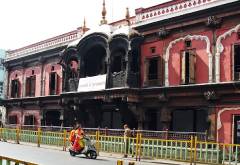
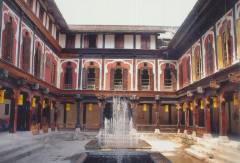
2.Surat Castle, Surat –The Surat castle is one of the ancient monuments of 16th century. This historical castle which was planned and built on the bank of river Tapi, between 1540 and 1546 by Khudawand Khan, on the order of the Ahmedabad king Sultan Mahmood-III. The castle’s main features consists of a fortification on four sides with four bastions at corners , a ‘draw-bridge’ over the moat on landward side and a there is an imposing gateway in the eastern wing.
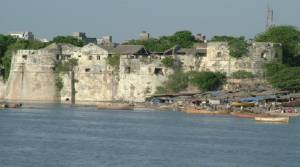

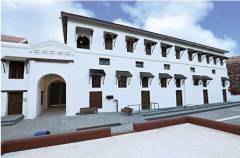
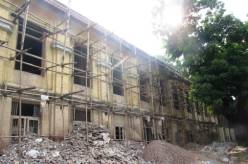
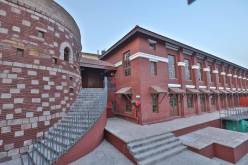
3.Old Prime Minister’s Office ( old Singha Durbar Palace) – Nepal Govt, Nepal- Singha Durbar is a palace in Kathmandu, the capital of Nepal. The palace complex lies in the centre of Kathmandu. This palace was built by Chandra Shumsher JBR in June 1908. The palace used to be one of the most exquisite and lavish of palaces in the world until the 1950s. Before the fire of 1973, Singha Durbar had 7 courtyards and 1700 rooms with marbled floor, painted ceilings, silver furniture and expanses of crystal lighting.
The State Hall is the largest and the most decorated room in this palace. This hall is adorned with foreign imported art pieces like Murano glass crystal chandeliers, Belgian mirrors along with English stained glass doors and Italian marble floors with floral patterns in walls and ceilings. In July 1973, a huge fire broke out in Singha Durbar engulfing all three wings of the palace except the front West facing wing . To prevent the front wing from catching fire, cannon destroyed three wings facing North, South and East. After the fire was put out, the whole area was rebuilt on the old foundation. Singha Durbar was seriously damaged during the April 2015 Nepal earthquake. It was designated unsafe and was condemned.
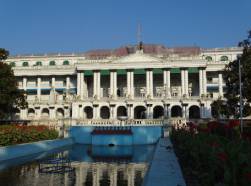
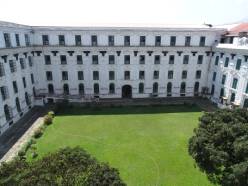
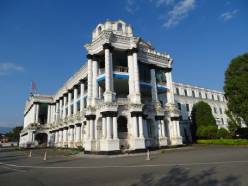
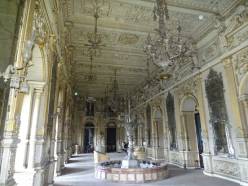
4.Kaiser Mahal, Nepal-Kaiser Mahal is a Rana palace in Kathmandu, the capital of Nepal. The palace complex, was incorporated in an impressive and vast array of courtyards, gardens and buildings. Initially the land area of Keshar mahal was occupied by a small palace, Chandra Shamsher Jang Bahadur Rana,who then destroyed the old palace and build a new palace in 1895 for his son Kaiser Shamsher Jang Bahadur Rana with pavilions, fountains, decorative garden furniture, and European-inspired pergolas, balustrades, urns, and statues.
This palace was partially damaged during the April 2015 Nepal earthquake. Kaiser Mahal was designated safe and received a yellow sticker. Currently the Kaiser Library, and Sampati Suddhikaran Aayog has started evacuation. The future of this historical building is unknown


5.Deccan College, Pune –Established in 1821 as Hindoo College, it is one of the oldest institutions of modern learning in India. Deccan College is a post-graduate institute of Archeology, Linguistics and Sanskrit & Lexicography Pune, India. The Deccan College was shifted to the new campus covering an area of 115 acres near Yerawada on March 23, 1868. The main building of the college was built in beautiful Gothic architecture, The iconic heritage structure is a two-storied building with a tower at the centre. The building’s most area has been constructed in stone and wood. Deccan College is grade 1 property as per the Pune Municipal Corporation’s Heritage List.
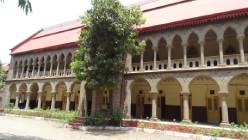
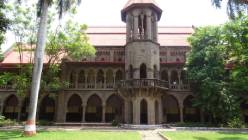
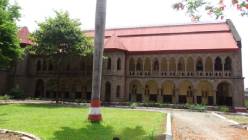
6.Kasba Ganapati Temple, Pune – Built around 1630 ( 380 years old ) – Ground + 1 Upper floor – The main temple is in Stone masonry and the Sabha-mandap and adjoining structure is a composite structure built in load bearing Brick masonry walls and Timber Column – Beam frame. The temple was commissioned by Jijabai – mother of Shivaji Maharaj.

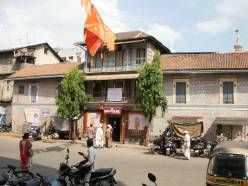
7.Nageshwar Temple, Pune –Built in 1740 – 1761 ( 270 years old ) – Ground + 1 Upper floor – The main temple is in Stone masonry and the Sabha-mandap is built in Timber Column – Beam frame. Nageshwar temple is considered as one of the oldest temples of Pune and it has beenthere since the times of Sant Gyaneshwar and Tukaram. One can notice that the main shrine has the typical Yadava structure with a stone roof. Several renovations and additions have been made to the temple over the years. This delightful temple was built in 1730
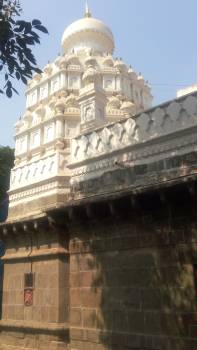
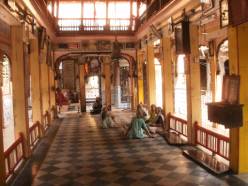
8.Pune University – Main Building –Built in 1864 – 1871 ( 140 years old ) – Ground + 1 Upper floor building with a central 100 feet high flag tower – A load-bearing Stone masonry and composite stone and brick masonry structure. Part of the structure timber-framed structure with pitched clay tile roof and brick masonry walls. Originally used as a Governor’s Residence

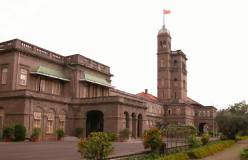
9.Tulshi Bag Temple, Pune –Built in 1761 ( 250 years old ) – Ground + 1 Upper floor – The main temple is in Stone masonry and the Sabha-mandap and adjoining structure is a open Timber Column – Beam frame with Timber trusses covered with clay tiles .


10.Agriculture College, Pune – Main Building – Built in 1911 ( 100 years old ) – Ground + 1 Upper – A load-bearing Stone masonry structure

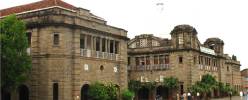
11.Panch-haud Mission Church, Pune – Built in 1835 ( 176 years old ) – The entire premise comprises of three structures , the Main Church, Residence of Parish Priest & 135 feet high Bell Tower. The Bell tower is marvellous piece of Brick Masonry load bearing structure.
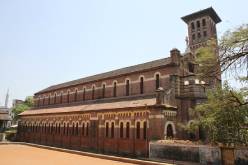
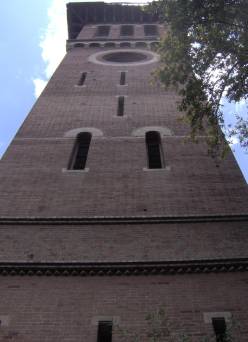
12.Mahatma Phule Mandai ( Mahatama Phule Vegetable Market ), Pune – Built in @ 1885. Mandai officially known as Mahathma Phule Mandai is the biggest vegetable market in Pune City, India.
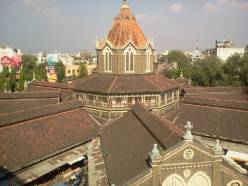
13.Council Hall, Pune – A grade I heritage structure also known as “Vidhan Bhavan” was built in 1870. The building is significant as it was here that the first session of the then Bombay legislative assembly was held — on July 19, 1937. The first session of the Bombay legislative assembly after independence was also held here — on September 10, 1947.
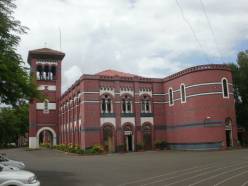
14.Nana wada, Pune – ( 250 years old ) – Ground + 1 Upper floor – Composite structure built in load bearing Brick masonry walls and Timber Column – Beam frame. The Wada was built by Nana Phadnavis; who after the assassination of Peshwa Narayanrao in 1773 managed the affairs of state


15.Shri Mayureshwar Ganesh Temple, Morgaon, Pune – The Morgaon temple is the starting point of the pilgrimage of eight revered temples of Ganesha, around Pune. The exact date of building of the temple is unknown, though the Ganapatya saint Moraya Gosavi is known to be associated with it. The temple flourished due to the patronage of the Peshwa rulers and descendants of Moraya Gosavi. The temple is surrounded by a tall stone boundary wall with minarets at each of the four corners, suggesting a Muslim influence on the architecture. The quadrangular courtyard has two Deepmalas
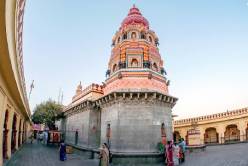
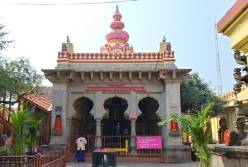
16.Shri Siddhivinayaka Temple, Siddhatek, Ahemednagar – Siddhatek is prescribed to the second temple to be visited in the Ashtavinayak circuit. The present temple was built in the late 18th century by Ahilyabai Holkar. The outer sabha-mandapa (hall) was broken in 1939 and was rebuilt in 1970. The main templeis constructed in black stone, the temple has sabha-mandapa (assembly hall) of black stone and another sabha-mandapa, which is a later addition. The temple also has a Nagarkhana.
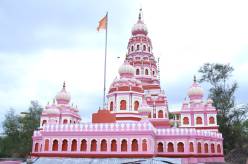
17.Chintamani Temple, Theur, Pune – Theur is prescribed to the fifth temple to be visited in the Ashtavinayak circuit. Though the temple is believed to have existed since antiquity, the current structure of the temple was built by saint Morya Gosavi. Madhavrao Peshwa rulers, (1745–1772) renovated and made additions to the temple structure. The campus comprises of Main stone temple with wooden sabhamandap (assembly hall) surrounded by 20 Ovaree structures
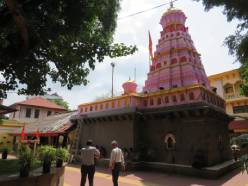
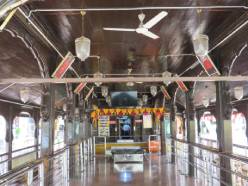
18.Shri Moraya Gosavi’s Sanjeevan Samadhi Temple, Chinchawad, Pune – Moroba Gosavi was a prominent saint of the Hindu Ganapatya section. Morya also took sanjeevan samadhi by burying himself alive in a tomb in 1561. A stone temple was constructed over his Samadhi later on

19.Mangalmurti wada Chinchawad Deosthan, Pune – The timber-framed typical wada is replete with finely carved motives in wood, exquisitely crafted stucco-plaster and in places lime stucco on the walls. The wada is known to have been visited by Chatrapati Shivaji Maharaj.
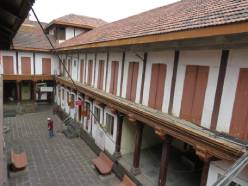

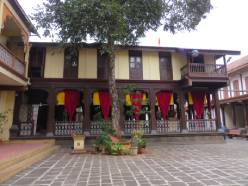
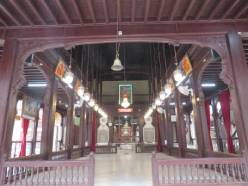
20.Shri Laxmi Narsimha Temple – Neera Narsingpur – The construction of the ghat was completed in 1527. The current structure of the temple was built in 1787. The temple has been built in Peshwa architectural style in black stone. There are several small temples located in the complex.
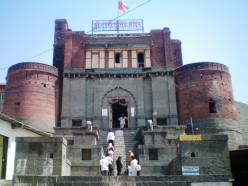
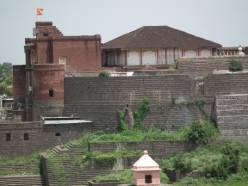
21.Adwait Vedant Ashram, Mayawati , Uttarakhand –The Advaita Ashram has its origins in 1896, when Vivekananda was travelling through the Alps recuperating, and expressed the desire to have a similar place in India, for retreat and study of Vedas. Advaita Ashrama, Mayavati, a branch of the Ramakrishna Math, was founded on 19 March 1899 in the Himalaya. The buildings are load baring structures with timber framing system.


22.The Sardar Dastur Hoshang Boys’ High School, Pune – Established in 1912, is situated at the centre of the Dastur Schools Campus, camp Pune. – Ground + 1 Upper – A load-bearing Stone masonry structure


23.St Helena School, Pune – The Anglo-Indian Christian minority school, which is an all-girls’ school, was started by Susie Sorabji in 1908, located in Pune Cantonment – Ground + 1 Upper – A load-bearing Stone masonry structure

24.Gundacha Ganapati Temple, Pune – 250 years old – Ground floor – The main temple is in Stone masonry and the Sabha-mandap and adjoining structure is having Timber Column – Beam frame with Timber trusses covered with clay tiles.


25.Meherazad – Meher baba – Ahemednagar – Meherazad is Meher Baba’s home. Meher Baba lived at Meherazad from 1944 until his death in 1969.
